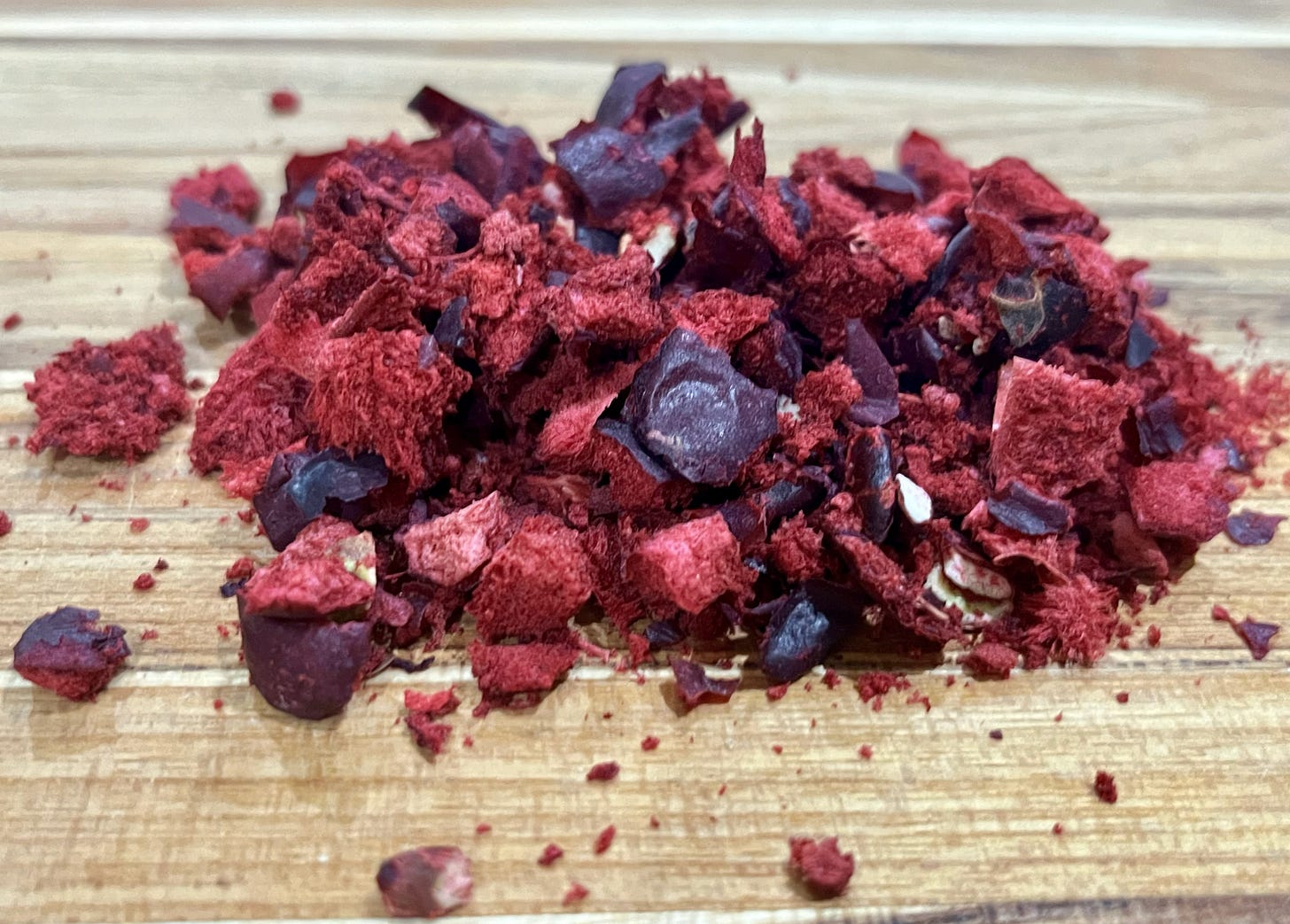The Iced Tea I Make To Help My Dry Eye Pain
A tart, refreshing iced tea with a hint of floral and earthiness seems to ease some of my dry eye pain on the worst days.
In this newsletter, you’ll learn:
How different each day can be for someone with a chronic illness
How native lemongrass, gumbi gumbi, and Davidson plum are potentially beneficial for managing pain
My favorite iced tea for really painful days
Every morning, I wake up and it feels like I’m ripping my eyelids off my eyes. I take medication and prescription eye drops, use humidifiers, over-the-counter eye drops, and do just about everything you could imagine to help my dry eye pain from Sjogren’s. But that first moment of the day is one of the worst.
And fortunately, or unfortunately, I know exactly how the rest of my day is going to go based on that first moment.
Some days are worse than others — as anyone with a chronic illness or autoimmune disease can attest to. Today? It was an okay day. My eyes definitely hurt when I opened them, but it wasn’t the worst I’ve experienced.
Now whether this is psychosomatic or has some real benefits, this is my go-to drink when it’s a really bad day. I always keep this brew in the fridge and drink it cold (or lukewarm).
Pain-Reliever Tea
Australian Native Lemongrass (Dried)
Gumbi Gumbi
Freeze-Dried Davidson Plum Pieces
I discovered all three of these while doing a deep dive on native Australian ingredients, and how, for many years, the First Nations people used things they could grow as medicine. As always — I’m not a doctor. I’m not a nutritionist. I’m not a chef. I experiment a lot with food both for culinary and medicinal reasons. I’m not claiming I can cure your pain with this tea, or that it will even work for you. I’m simply sharing my experience.
Native Lemongrass
Even if you’re not thoroughly engrossed in watching global cooking competition shows, you’ve likely heard about lemongrass. It really is a widespread grass. It’s tolerant of frost and heat, so it grows very well in many places.
Taste profile: Lemon-lime, a little floral, and a little earthy
Lemongrass has a long history of being used to help respiratory issues by crushing the stems and inhaling the scent. The roots and stems, when crushed together, were infused to help treat muscle cramps and headaches, and topically, it was used to treat skin ailments.
In 2011, a study was done in Australia effectively showed that the compounds eugenol and elemicin found in lemongrass could stop human platelets from releasing a chemical that causes blood clots. Eugenol showed strong effects even at low doses, suggesting that the traditional use of native lemongrass can be effective against headaches.
In simple terms, the study proved that the First Nations people who were using native lemongrass to ease inflammation were spot on. It’s why you’ll often find lemongrass in a lot of commercially-made products for dentistry, skincare, and more.
With that knowledge, and knowing that my dry eye causes inflammation, I added it to my tea concoction.
Gumbi Gumbi
This one might be new to you — gumbi gumbi (sometimes spelled gumby gumby or simply bush gumby) is also known as native apricot for the vibrant orange fruit it produces.
First Nations people would create a mixture of the seeds, fruit pulp, and leaves and use it topically to help with eczema and other skin issues, while internally taking it for cold symptoms. As with most plant-based medicine, more research needs to be done to prove if this is actually beneficial. If you give it a shot and it works for you — great! If it doesn’t, that’s okay too.
Taste profile: Slightly bitter eucalyptus flavor
Davidson Plum
This is one of my favorites from Australia. Though you might not stumble across a Davidson plum and eat it fresh because it’s so tart.
Why is it good? Davidson plums are rich in anthocyanins, which produce the purple and crimson color that you’ll see below. These plums are chock full of antioxidants (more than blueberries!), folate, zinc, magnesium, calcium, phosphorus, potassium, manganese, copper, and lutein.
That’s a whole lot of things to consider. But why do I add it to my drink? Particularly for the phosphorus and lutein. Phosphorus is great for bones and teeth — and since dry mouth is a huge part of my disease, I care a lot about my teeth. Lutein is known to improve or even prevent age-related eye disease. Another ingredient high in lutein is spinach — so if you’re concerned about your eyes, start eating some spinach.
Taste profile: Tart and sour plum
Brewing Guide:
I use all three ingredients in about equal measurements, brew them in hot water, let them steep, and then put the tea in the fridge. You could definitely drink this hot — I just live in a hot environment and prefer iced tea in the summer.
Caveat: If you find Davidson plum powder instead of freeze-dried chips, try to dissolve and mix as much of the powder in hot water as you can before brewing the tea.
Disclaimer: While these three ingredients are all naturally found and plant-based, you should always check with your doctor before trying anything new. You never know what might be a contraindication with a medication or another ailment you already have.





Learning so many new things from this blog!